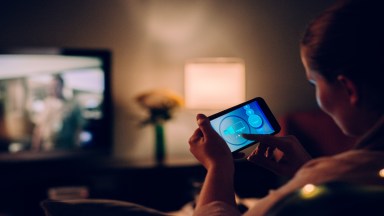The world of sports is not immune to gender bias, as evidenced by the notably lopsided coverage of women’s sports by the media and the disproportionate level of brand sponsorship spend allocated to men’s sports. This situation changes, however, during a two-week period every two years when the eyes of the world focus on the Olympics, the only global sporting event characterized by true gender parity.
Unlike other events, the Olympics features men and women competing in the same events in the same stadiums for gold, silver and bronze medals of equal importance. Perhaps more importantly, broadcasters and sponsors don’t differentiate between genders at the games. As the biggest sporting event on the planet, the Olympics elevate the premise of gender equality even higher.
The elevation is important, as media coverage for regular league events heavily favors men’s sports. For example, a 2018 Nielsen Sports study found that the volume of media coverage of women’s sports across Europe ranged from as low as 2% to just 12% at peak times. The balanced coverage during the Olympics is especially warranted when we look at interest levels in the Olympics. In fact, interest among females in the Winter Olympics is higher than overall interest in the games.
The balanced nature of the Olympic audience hasn’t gone unnoticed among brands, as many have tailored their campaigns to be inclusive and meaningful for a broader base of viewers. Procter & Gamble’s “Thank You Mom” and “Lead with Love” campaigns, for example, tap into the emotion of the games by highlighting the support that families provide to aspiring athletes, as well as the caring side of the competitors.
The structure of the Olympics is a notable benefit in the drive to foster gender equality in sports. In addition to serving as a platform that represents the pinnacle of achievement in sports, the gender balance within the Olympics is ingrained in the event from the start, with access to participation, coaches and facilities structured into the events right down to the grassroots level. The visibility of role models is also balanced across both genders. Comparatively, interest in women’s sports that are structured separately, such as soccer, rugby and cricket, started from a much lower base. That base is growing rapidly, but still has much ground to gain to approach parity.
Given the global spotlight on the Olympics, the games present women with the greatest opportunity to gain worldwide recognition and stardom among both sports fans and the general population. Importantly, marketers looking to associate with these athletes don’t need to wait for the medal ceremonies to know which stars will be the most effective brand ambassadors. That’s because Nielsen Gracenote’s medal winner predictions and Nielsen Sports’ valuation of athletes’ partnerships with brands across social media in the lead up to the games provides critical insight into sponsorship potential.
And when we look at the predicted female medalists with the largest social media followings, we see that they have shared almost twice as many posts with sponsors to date this year than they did last year. The result? An increase of 83% engagement with partners for those posts. On the flipside, the top 15 predicted male medalists have also posted more, but engagement with those posts and therefore partners, has declined.
As we’ve seen in other sports arenas, Olympic athletes are actively using their platforms to talk about and tackle issues and topics that they’re passionate about. The same is true for the brands that choose to partner with them. For example, Allyson Felix and Simone Biles moved from Nike to partner with Athleta, a brand that aims to “empower women and girls.” For Felix, mother of a young toddler, maternity protections for sponsored athletes and working women was a critically important issue which inspired her decision. The move is aligned with causes Olympic fans feel strongly about, as 66% of U.S. fans say they are passionate about gender equality, according to Nielsen Fan Insights.
Prior to mid-June 2021, their Instagram posts mentioning Athleta have, on average, generated two to three times more engagement and value than other branded posts on the two athletes’ Instagram accounts this year. Fans and customers have responded, with social conversations around the Biles-Athleta partnership topping 10,000 as of June 16.
But social media isn’t the only partnership opportunity. Data from the Nielsen Sports Sponsorglobe database is tracking an increase in commercial deals with female athletes. Between 2017 and 2020, the number of sponsorship deals has increased by 31%, with each deal increasing approximately 65% in value. For comparison, the increase in sponsorship opportunities and value among women athletes stands in opposition to the trends in Europe, where commercial deals grew by 10% between 2017 and 2019, and then fell 23% in 2020 due to the COVID-19 pandemic.
Although individual sponsorships for women account for a small portion of total sponsorships, and tennis players dominate the larger deals, we are seeing an increase in sponsorships for female athletes like Simone Biles (gymnastics), Megan Rapinoe (soccer), Mikaela Shiffrin (alpine skiing), Pusarla Venkata Sindhu (badminton) and Katie Ledecky (swimming).
In aggregate, the Olympics represent an even playing field in the world of sports competition. The event provides female athletes an opportunity to compete on a global stage in front of an incomparable audience within a two-week window of equality. For National Olympic Committees and sporting bodies as well as brands and media, it’s a key pinnacle moment in sport to showcase athletes and sports of both genders equally, as well as engage a very gender-balanced and wide fanbase.
The beauty of the Olympics lies in how they reveal potential—not just among talented athletes, but also among ideals, such as fairness and equity. Broadly speaking, the Olympic games are clear evidence that gender equality is possible in global sports. Given this, brands, rightsholders and media have unmatched opportunities to win by embracing the Olympics and women in sports more generally. With long-term strategies and increased investment, the true potential of women’s sports can be realized.



